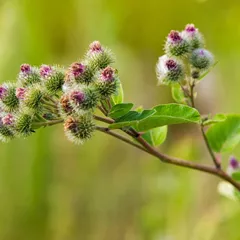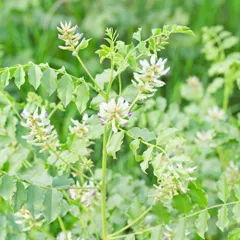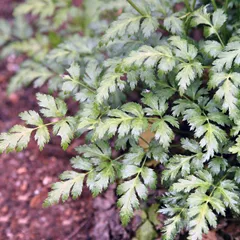Qing Xin Li Ge Tang
Chinese: 清心利膈汤
Pinyin: Qīng Xīn Lì Gé Tāng
Other names: Clear the Heart and Enable the Diaphragm Decoction








Qing Xin Li Ge Tang
Chinese: 清心利膈汤
Pinyin: Qīng Xīn Lì Gé Tāng
Other names: Clear the Heart and Enable the Diaphragm Decoction
Ingredients: 13 herbs
Category: Formulas that clear internal abscesses and sores
- Clears Toxic-Heat
- Unblocks the stool
- Benefits the throat
Contraindications: Contraindicated during pregnancy or for breastfeeding mother. Use with caution... Contraindicated during pregnancy or for breastfeeding mother. Use with caution for young kids, the elderly, the debilitated or those with loose stools. Not for long term use. see more
Source: Indispensable Tools for Pattern Treatment (1602 AD)
The information provided here is not a replacement for a doctor. You shouldn't use it for the purpose of self-diagnosing or self-medicating but rather so you can have a more informed discussion with a professional TCM practitioner.
Qing Xin Li Ge Tang is a 13-ingredient Chinese Medicine formula with Saposhnikovia Roots (Fang Feng), Japanese Catnip (Jing Jie) and Wild Mint (Bo He) as principal ingredients.
Invented in 1602 AD, it belongs to the category of formulas that clear internal abscesses and sores. Its main actions are: 1) clears Toxic-Heat and 2) unblocks the stool.
In Chinese Medicine health conditions are thought to arise due to "disharmonies" in the body as a system. These disharmonies are called "patterns" and the very purpose of herbal formulas is to fight them in order to restore the body's harmony.
In this case Qing Xin Li Ge Tang is used by TCM practitioners to fight patterns like Phlegm-Heat in the Lungs. From a Western Medicine standpoint, such patterns can give rise to a range of conditions such as tonsillitis, peritonsillar abscess or epiglottitis for instance.
On this page, after a detailed description of each of the thirteen ingredients in Qing Xin Li Ge Tang, we review the patterns and conditions that Qing Xin Li Ge Tang helps treat.
The thirteen ingredients in Qing Xin Li Ge Tang

Fang Feng is a king ingredient in Qing Xin Li Ge Tang. Like the name indicates, it means it has more power than other ingredients in the formula.
1. Saposhnikovia Roots (Fang Feng)
In general Fang Feng's main actions are as follows: "Relieves the Exterior and disperses Cold. Relieves Wind-Damp-Cold painful obstruction. Disperses Wind."
In the context of Qing Xin Li Ge Tang, it is used because it is acrid and cool. It disperses clumped Heat and clear pathogenic Heat.

Jing Jie is a king ingredient in Qing Xin Li Ge Tang. Like the name indicates, it means it has more power than other ingredients in the formula.
2. Japanese Catnip (Jing Jie)
Part used: Aerial portion and flowers, or the spikes only (in which case it is called Jing Jie Sui)
Nature: Neutral
Taste(s): Pungent
In general Jing Jie's main actions are as follows: "Relieves the Exterior and disperses Cold or Heat depending on the other herbs used. Releases the Exterior for measles. Stops bleeding. Abates swellings."
In the context of Qing Xin Li Ge Tang, it is used because it is acrid and cool. It disperses clumped Heat and clear pathogenic Heat.

Bo He is a king ingredient in Qing Xin Li Ge Tang. Like the name indicates, it means it has more power than other ingredients in the formula.
3. Wild Mint (Bo He)
In general Bo He's main actions are as follows: "Relieves the Exterior and disperses Wind-Heat. Clears Wind-Heat from the head, eyes and throat. Allows the release of toxins from the skin. Moves Stagnant Liver Qi"
In the context of Qing Xin Li Ge Tang, it is used because it is acrid and cool. It disperses clumped Heat and clear pathogenic Heat.

Jie Geng is a deputy ingredient in Qing Xin Li Ge Tang. This means it helps the king ingredient(s) treat the main pattern or it serves to treat a coexisting pattern.
4. Platycodon Roots (Jie Geng)
In general Jie Geng's main actions are as follows: "Opens the Lungs and smoothes the flow of Lung Qi. Expels Phlegm and pus from the Lungs and throat, can be used for either Wind-Cold or Wind-Heat according to the other herbs in the formula. Directs the actions of other herbs to the Upper Burner. "
In the context of Qing Xin Li Ge Tang, it is used because it work with Wild mint to resolve Toxicity and disperse clumps, and to clear the throat.

Lian Qiao is a deputy ingredient in Qing Xin Li Ge Tang. This means it helps the king ingredient(s) treat the main pattern or it serves to treat a coexisting pattern.
5. Forsythia Fruits (Lian Qiao)
In general Lian Qiao's main actions are as follows: "Expels Heat and toxicity from the Blood. Dispels External Wind-Heat. Reduces lumps, swollen lymph nodes and sores of a Heated nature."
In the context of Qing Xin Li Ge Tang, it is used because it is acrid and cool. It disperses clumped Heat and clear pathogenic Heat.

Niu Bang Zi is a deputy ingredient in Qing Xin Li Ge Tang. This means it helps the king ingredient(s) treat the main pattern or it serves to treat a coexisting pattern.
6. Greater Burdock Fruits (Niu Bang Zi)
In general Niu Bang Zi's main actions are as follows: "Relieves the Exterior and disperses Heat. Allows the release of toxicity from the surface and clears Heat. Reduces swelling and clears pathogenic Heat. Lubricates the Intestines. Relieves sore throat."
In the context of Qing Xin Li Ge Tang, it is used because it work with Wild mint to resolve Toxicity and disperse clumps, and to clear the throat.

Huang Qin is an assistant ingredient in Qing Xin Li Ge Tang. This means that it either serves to reinforces the effect of other ingredients or it moderates their toxicity.
7. Baikal Skullcap Roots (Huang Qin)
Part used: Dried root
Nature: Cold
Taste(s): Bitter
Meridian affinity: GallbladderHeartLarge intestineLungSmall intestineSpleen
Category: Herbs that clear Heat and dry Dampness
In general Huang Qin's main actions are as follows: "Expels Heat and Dampness. Clears Upper Burner Heat, especially of the Lung. Clears Heat and stops reckless movement of Blood. Clears pathogenic Heat which is upsetting the fetus. Cools the Liver, reducing Liver Yang rising syndrome."
In the context of Qing Xin Li Ge Tang, it is used because it clear Toxic-Heat of the Lungs.

Huang Lian is an assistant ingredient in Qing Xin Li Ge Tang. This means that it either serves to reinforces the effect of other ingredients or it moderates their toxicity.
8. Goldthread Rhizomes (Huang Lian)
Part used: Dried rhizome
Nature: Cold
Taste(s): Bitter
Meridian affinity: GallbladderHeartLarge intestineLiverSpleenStomach
Category: Herbs that clear Heat and dry Dampness
In general Huang Lian's main actions are as follows: "Expels Damp-Heat especially in the Lower Burner. Eliminates Fire toxicity especially when there is associated Dampness. Acts as a sedative by eliminating Heart Fire. Eliminates Stomach Fire. Expel parasites"
In the context of Qing Xin Li Ge Tang, it is used because it clear Toxic-Heat of the Stomach.

Zhi Zi is an assistant ingredient in Qing Xin Li Ge Tang. This means that it either serves to reinforces the effect of other ingredients or it moderates their toxicity.
9. Cape Jasmine Fruits (Zhi Zi)
Part used: Dried ripe fruit
Nature: Cold
Taste(s): Bitter
Meridian affinity: GallbladderHeartLungSanjiao
Category: Herbs that clear Heat and purge Fire and/or clear Summer Heat
In general Zhi Zi's main actions are as follows: "Clears Heat and calms spirit. Drains Damp-Heat affecting the Liver and Gallbladder. Clears Heat in the Blood and stops bleeding. Anti-inflammatory."
In the context of Qing Xin Li Ge Tang, it is used because it clear Toxic-Heat of the Heart.

Xuan Shen is an assistant ingredient in Qing Xin Li Ge Tang. This means that it either serves to reinforces the effect of other ingredients or it moderates their toxicity.
10. Ningpo Figwort Roots (Xuan Shen)
Part used: Dried rhizome
Nature: Cold
Taste(s): Bitter
Meridian affinity: Large intestineLiverStomach
Category: Herbs that cool the Blood
In general Xuan Shen's main actions are as follows: "Expels true or Internal Heat and cools the Blood. Tonifies the Yin. Reduces inflammations and drains Fire toxicity. Reduces hard nodules, especially associated with the lymph."
In the context of Qing Xin Li Ge Tang, it is used because it work with Wild mint to resolve Toxicity and disperse clumps, and to clear the throat.

Da Huang is an assistant ingredient in Qing Xin Li Ge Tang. This means that it either serves to reinforces the effect of other ingredients or it moderates their toxicity.
11. Rhubarb (Da Huang)
Part used: Dried root and rhizome
Nature: Cold
Taste(s): Bitter
Meridian affinity: SpleenStomachLarge intestineLiverPericardium
Category: Purgative herbs that drain downward
Da Huang drains Fire by unblocking the stool. In this way, pathogenic Heat is dredged from the Exterior and cleared from the Interior, the clumped Heat is dispersed and drained, and the throat is cleared.

Mang Xiao is an assistant ingredient in Qing Xin Li Ge Tang. This means that it either serves to reinforces the effect of other ingredients or it moderates their toxicity.
12. Mirabilites (Mang Xiao)
Part used: The rock crushed as a powder
Nature: Cold
Meridian affinity: StomachLarge intestine
Category: Purgative herbs that drain downward
Mang Xiao drains Fire by unblocking the stool. In this way, pathogenic Heat is dredged from the Exterior and cleared from the Interior, the clumped Heat is dispersed and drained, and the throat is cleared.

Gan Cao is an envoy ingredient in Qing Xin Li Ge Tang. This means that it directs the formula towards certain area of the body and/or harmonizes the actions of other ingredients.
13. Liquorice (Gan Cao)
Part used: Dried root and rhizome
Nature: Neutral
Taste(s): Sweet
Meridian affinity: HeartLungSpleenStomach
Category: Tonic herbs for Qi Deficiency
In general Gan Cao's main actions are as follows: "Tonifies the Basal Qi and nourishes the Spleen Qi. Clears Heat and dispels toxicity. Moistens the Lungsexpel phlegm and stop coughing. Relieves spasms and alleviates pain. Harmonizes and moderates the effects of other herbs."
In the context of Qing Xin Li Ge Tang, it is used because it work with Wild mint to resolve Toxicity and disperse clumps, and to clear the throat.
Qing Xin Li Ge Tang is used to treat Phlegm-Heat in the Lungs
It's important to remember that herbal formulas are meant to treat patterns, not "diseases" as understood in Western Medicine. According to Chinese Medicine patterns, which are disruptions to the body as a system, are the underlying root cause for diseases and conditions.
As such Qing Xin Li Ge Tang is mostly used to treat the pattern "Phlegm-Heat in the Lungs" which we describe below.
But before we delve into Phlegm-Heat in the Lungs here is an overview of the Western conditions it is commonly associated with:
Tonsillitis Peritonsillar abscess Epiglottitis
Again it wouldn't be correct to say "Qing Xin Li Ge Tang treats tonsillitis" for instance. Rather, Qing Xin Li Ge Tang is used to treat Phlegm-Heat in the Lungs, which is sometimes the root cause behind tonsillitis.
Now let's look at Phlegm-Heat in the Lungs, a pattern that TCM practitioners commonly treat with Qing Xin Li Ge Tang.

The Lungs is a so-called "Zang" Organ. Learn more about the Lungs in Chinese Medicine
Phlegm-Heat in the Lungs
Pulse type(s): Rapid (Shu), Slippery (Hua)
Tongue coating: Sticky coating, Yellow coating
Tongue shape: Swollen
Symptoms: Acne Fever Clump Thirst Asthma Phlegm Anxiety Coughing Wheezing Insomnia Dizziness Chest pain Constipation Chest fullness Feeling of heat Epigastric pain Phlegm in throat Shortness of breath Clumping in the chest Bitter taste in the mouth Epigastric focal distention Focal distention of the chest Stifling sensation in the chest Coughing of copious thick yellow sputum Feeling of heaviness of the head and body
Qing Xin Li Ge Tang is sometimes prescribed by TCM practitioners to treat Phlegm-Heat in the Lungs. This pattern leads to symptoms such as coughing, shortness of breath, wheezing and stifling sensation in the chest. Patients with Phlegm-Heat in the Lungs typically exhibit rapid (Shu) or slippery (Hua) pulses as well as Red swollen tongue with a sticky yellow coating.
This pattern is similar to Damp-Phlegm in the Lungs, but with additional Heat features, such as feeling of heat, thirst and profuse sticky yellow or green sputum. The typical manifestations of Phlegm are the coughing, short of breath, Phlegm in the throat and chest oppression. The Phlegm can also... read more about Phlegm-Heat in the Lungs
Formulas similar to Qing Xin Li Ge Tang
Fang Feng Tong Sheng San is 59% similar to Qing Xin Li Ge Tang
Pu Ji Xiao Du Yin is 57% similar to Qing Xin Li Ge Tang
Jing Jie Lian Qiao Tang is 54% similar to Qing Xin Li Ge Tang
Liang Ge San is 54% similar to Qing Xin Li Ge Tang
Qing Wen Bai Du Yin is 50% similar to Qing Xin Li Ge Tang
Yin Qiao San is 46% similar to Qing Xin Li Ge Tang















